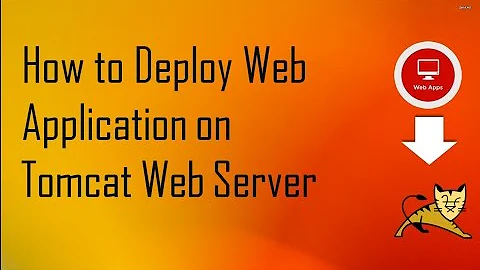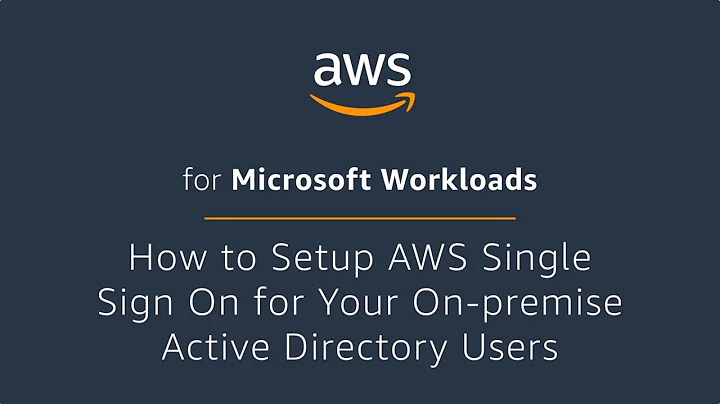How to Implement SSO on existing tomcat web application
Solution 1
You can implement SSO in many different ways:
- Oauth 2 - http://oauth.net/2/
- SAML 2 - https://www.oasis-open.org/committees/tc_home.php?wg_abbrev=security
SAML 2.0 has many implementations for Identity/Service provider roles.
For an IDP implementations list I can point you to this stackoverflow post: https://stackoverflow.com/a/761774/126414
If you are planning to implement a service provider there is a nice spring extension: http://static.springsource.org/spring-security/site/extensions/saml/index.html
Solution 2
Update: Its 2018 and the below info is out of date. If you’re starting a new application then use a federated identity protocol like Open ID Connect and you’ll get SSO for free.
There are a few approaches you could take:
- You could use Tomcat for authentication and use Tomcat's single sign on capabilities. If you're currently using Spring to authenticate the user you may need to change some things. Also, depending on how you're doing authentication, Tomcat's authentication may not be configurable enough.
- You could setup a third, CAS, servlet (or something similar), which both web applications authenticate against.
- You could set this up yourself using Spring and pre-authenticated filters. You would basically have to write your own pre-authenticated filter which checked some location that both servlets had access to (database?, shared context?) for existing credentials before falling back to old authentication methods. You'll want to make sure to clear this authentication in a filter somewhere so the next request doesn't get to automatically inherit the previous requests credentials.
Solution 3
I have managed this with the Tomcat's SSO Valve:
-
Put SSO Valve within Host (localhost) element of
server.xmlfile:<Host appBase="webapps" autoDeploy="true" name="localhost" unpackWARs="true"> <Valve className="org.apache.catalina.authenticator.SingleSignOn" /> </Host> -
Add users and roles (eg. in
tomcat_users.xml):<user username="user1" password="user1" roles="employee"/> -
In
web-appelement of your app'sweb.xmlfile, add security constraints:<security-constraint> <web-resource-collection> <web-resource-name>App name</web-resource-name> <url-pattern>/*</url-pattern> </web-resource-collection> <auth-constraint> <role-name>employee</role-name> </auth-constraint> </security-constraint> <login-config> <auth-method>FORM</auth-method> <realm-name>file</realm-name> <form-login-config> <form-login-page>/login.jsp</form-login-page> <form-error-page>/error.jsp</form-error-page> </form-login-config> </login-config> <security-role> <role-name>employee</role-name> </security-role> -
That's it. Now, log in to the one of your apps, and you should be logged in to other apps.
Of course, you should not use a plain text password in the production, this is just a quick example. You shoud consider Digest authentication, as well as configuring SSL on Tomcat.
I hope this will help someone!
P.S. if you store users in the SQL database, please check my comment below this answer.
Solution 4
You can deploy the CAS server (which is nothing but a war) in tomcat and configure your web app's filter accordingly. You can take help from this link.
Related videos on Youtube
Qstacker
Updated on August 22, 2020Comments
-
Qstacker almost 4 years
I have a tomcat 7 setup with oldApp.war and newApp.war deployed on it. Both the applications share the same login credentials for users on the database.
I can access the apps using
https://localhost/oldAppandhttps:localhost/newApprespectively.My oldApp is a Spring MVC java application and when the user is logged into the oldApp I want to have a link which will take the user into the newApp without asking for the login credentials.
I want to know how to implement SSO to do this. I preferably don't want to run any external service to handle this.
Thanks in advance.
-
 Jafar Ali over 9 yearscan you provide some resource without spring
Jafar Ali over 9 yearscan you provide some resource without spring -
 svlada over 9 years@JafarAli Could you please provide more details in your question? What is your use case? Do you have existing IDP (which one are you using?) and working on SP to integrate with it?
svlada over 9 years@JafarAli Could you please provide more details in your question? What is your use case? Do you have existing IDP (which one are you using?) and working on SP to integrate with it? -
 Jafar Ali over 9 yearsWE have Oracle access manager with SAML 2.0 support as IDP and My app will assume the role of Service provider. My app is not using Spring.
Jafar Ali over 9 yearsWE have Oracle access manager with SAML 2.0 support as IDP and My app will assume the role of Service provider. My app is not using Spring. -
 Jafar Ali about 9 yearsHay svlada. Can you direct me somewhere.
Jafar Ali about 9 yearsHay svlada. Can you direct me somewhere. -
 edjm over 8 yearsThe CAS url is outdated. Here is the current URI: apereo.org/projects/cas
edjm over 8 yearsThe CAS url is outdated. Here is the current URI: apereo.org/projects/cas -
akelec about 6 yearsI am glad that I helped you :).
-
manojadams about 6 yearshey, one more question. how to logout properly with above sso login? I was using session.invalidate() earlier but it does not work with sso and I am still logged in.
-
 Mandrek over 5 yearsBut how i can add dynamically users and roles in server.xml
Mandrek over 5 yearsBut how i can add dynamically users and roles in server.xml -
akelec over 5 yearsUnfortunately, that is not possible. However, you can store user credentials and roles in a (SQL) database, so the Tomcat could be able to read it. This could be done by setting a JDBCRealm realm in the server.xml. More info: tomcat.apache.org/tomcat-7.0-doc/realm-howto.html#JDBCRealm











